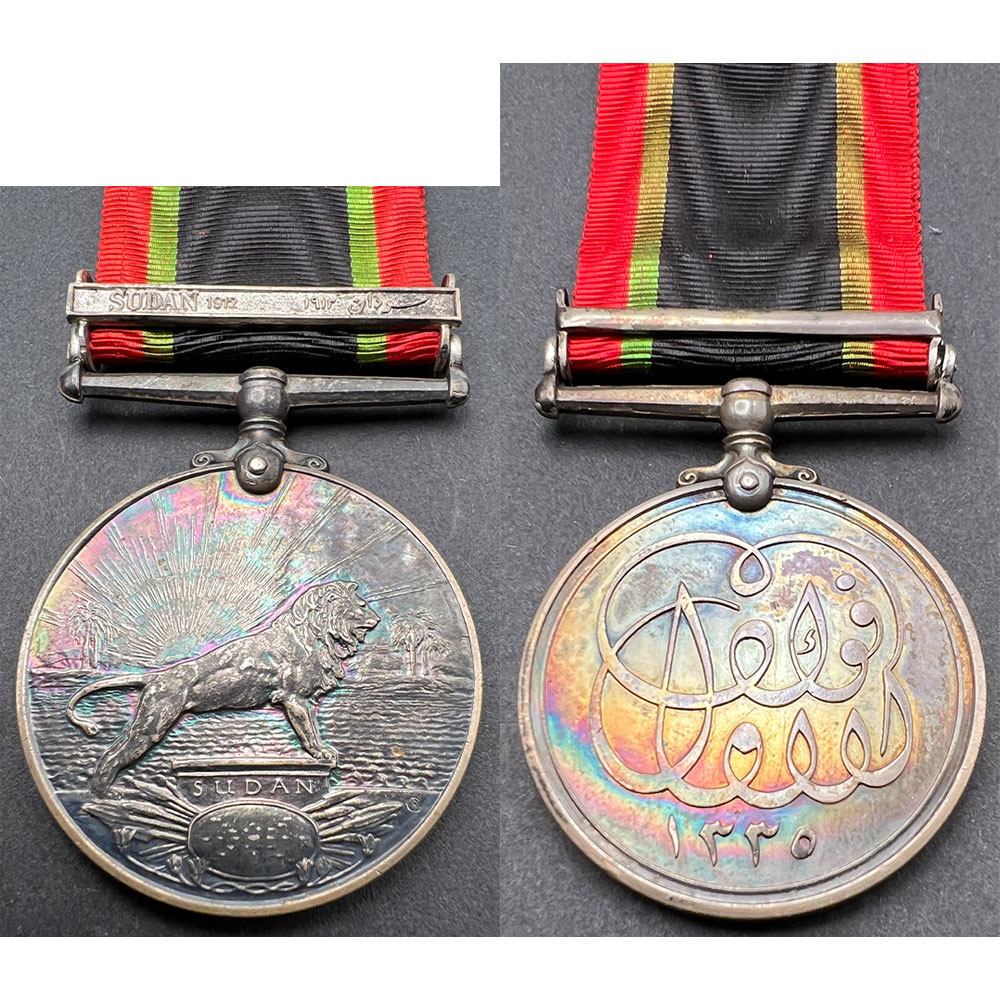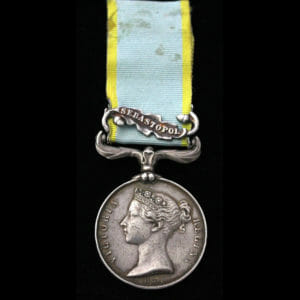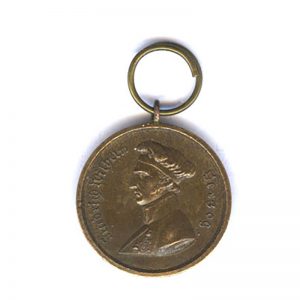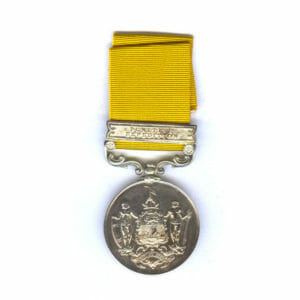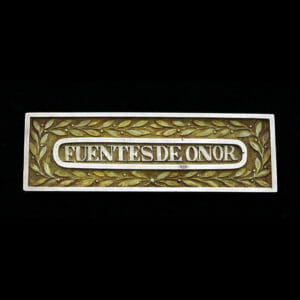Description
Khedive’s Sudan Medal 1910-21, 2nd Type, with “Sudan 1912” Bilingual Clasp in Arabic and English, unnamed as issued and in excellent preserved condition.
The medal is in barely worn condition and from storage has taken an attractive rainbow silver tone.
This clasp was awarded for service in Sudan between 12th October 1911 and 12th April 1912, British Battles & Medals records the following brief overview of the campaign:
“Awarded to 13 British Officers seconded to the Egyptian Army and 21 Native Officers and 407 Men, 13 Sudanese Infantry under Major Charles Henry Leveson DSO for operations against the Adonga Anuak. 2 British and 3 Native officers, together with 42 other ranks, were killed in the fighting, which ended on the border with Abyssinia, without effectively subduing the Anuak.”
The Anuak people proved to be a lot tougher than anticipated as M.W. Daly writes in “Empire on the Nile.
“The Military and Political position was radically altered, hoverer, by the Anuaks’ acquisition of firearms from Ethiopia. Anuak revenge raids then began. The Lau Nuer were especially hard hit. In 1911 a Patrol under Captain F.D. Dickson went up the Sobat and Akobo against the Anuak, burning villages but killed on 30 Anuak.
In March 1912 a large government patrol under Major C.H. Leveson, with Artillery, invaded Anuak territory. In a battle near Adonga, the Government lost 50 killed including 2 British Officers, and the Anuak lost fewer than one hundred, a ratio not customary or satisfactory to the Sudanese Government.”
You can read further about the campaign and history of the Anuak people in this article by Robert O. Collins for the Anuak Justice Council.
http://www.anuakjustice.org/doc_history_to_1956.htm
They note the following about the period:
“Governor-General Sir Reginald Wingate bitterly complained in 1911, ‘The Anuak raids have forced our hand and we must now go in where we did not wish to be involved.’ Consequently, in 1912 a large force was sent up the Akobo under the command of Major C. H. Leveson that drove off the Anuak but only after heavy losses among the government troops.
Anuak villages were destroyed, but the Anuak were not subdued.
A second armed force was planned to invade Anuakland in 1914, but the operations were cancelled at the outbreak of war in Europe. Unable to penetrate into Anuak territory and destroy their power, the Sudan government had to content itself with containing them by garrisons at Akobo and Pibor posts and establishing a chain of smaller police stations between the Anuak and the Nuer. This containment policy was only partially successful. Around the posts themselves British officials were able to assert nominal administration and even to collect tribute, but beyond, the Anuak were free from control, exploiting the international frontier to frustrate British attempts to exert authority. It was not until Akwei-wa-Cam himself died in 1920 that Lieutenant Colonel C. R. K. Bacon was able even to visit the heartland of the Anuak in the remote Adonga region. In 1921 he made a reconnaissance through Adonga. It was to be another fourteen years before a British District Commissioner returned to Adonga.”
